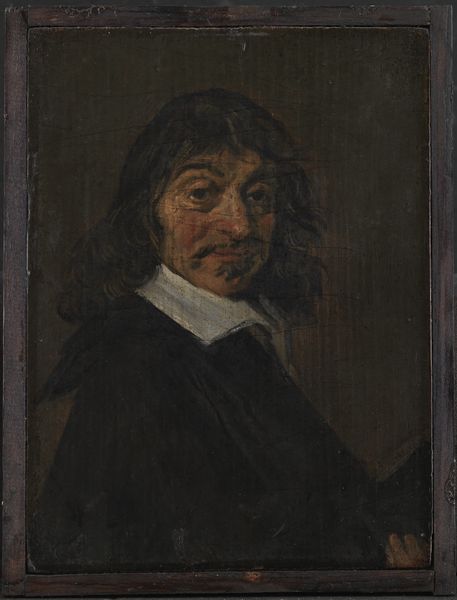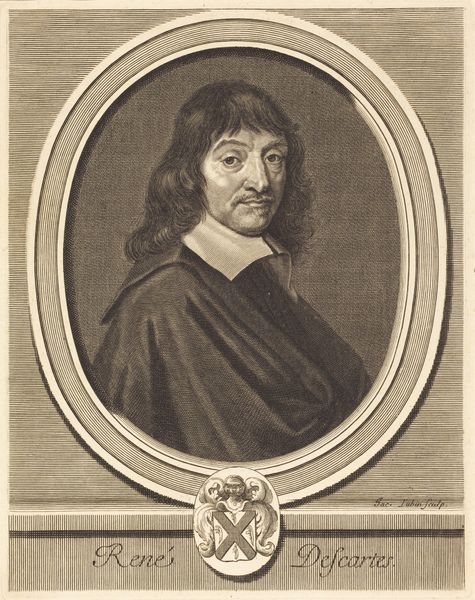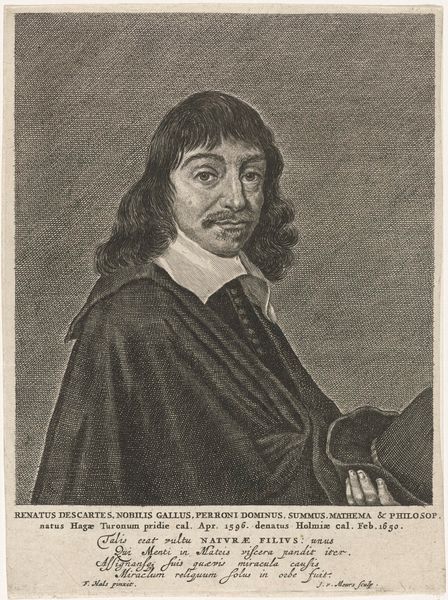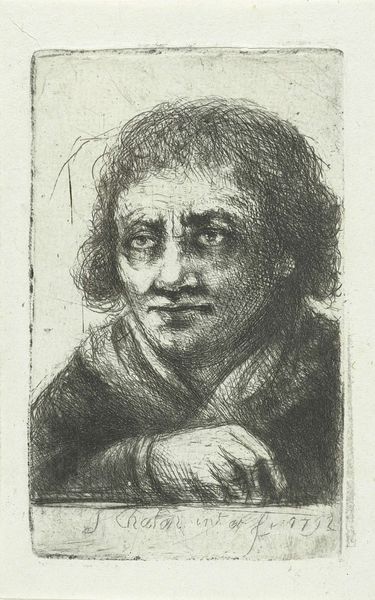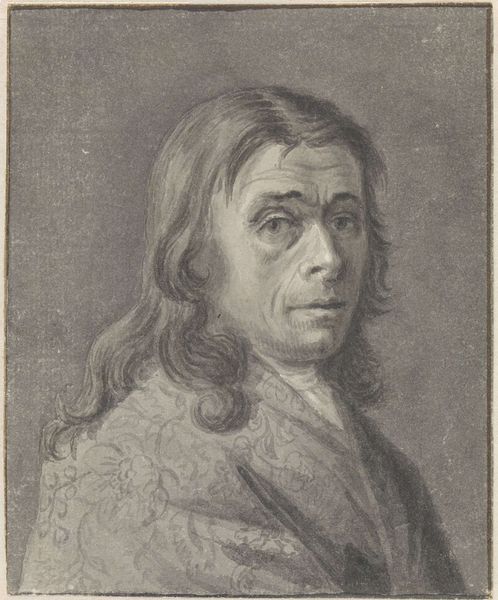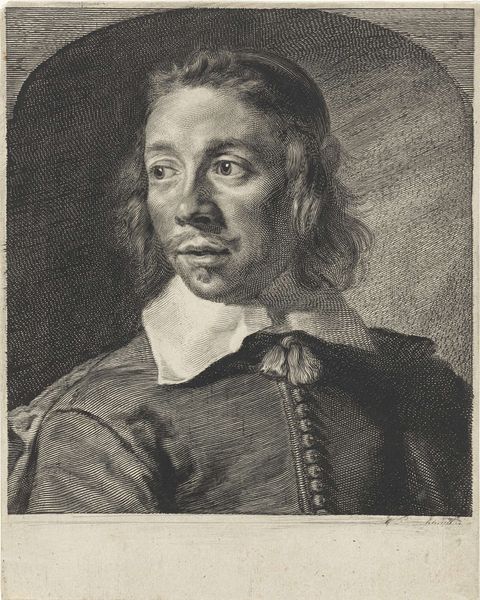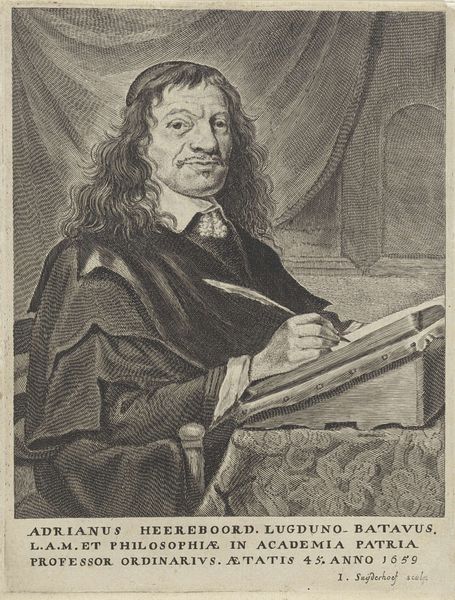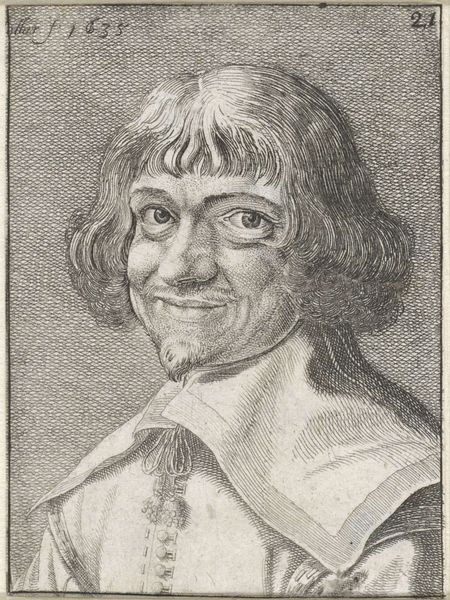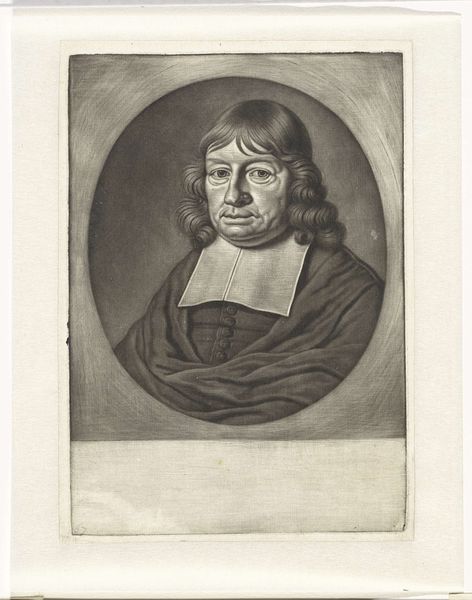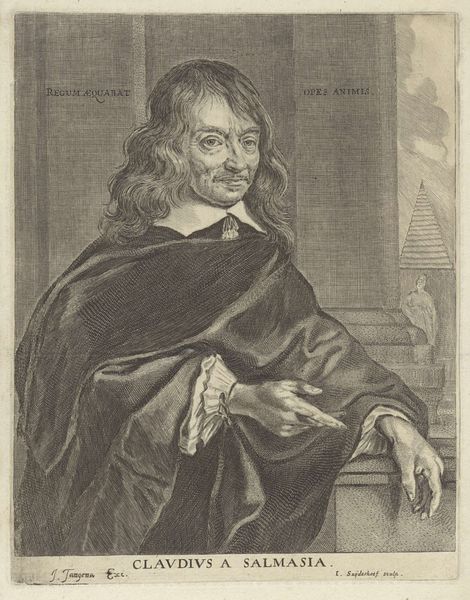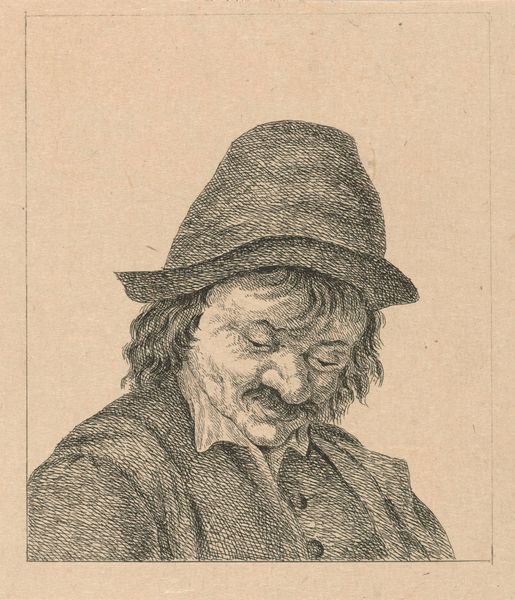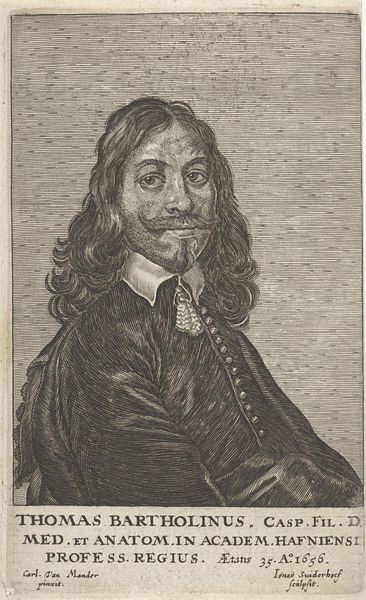
Dimensions: 223 mm (height) x 153 mm (width) (plademaal), 179 mm (height) x 134 mm (width) (billedmaal)
Editor: We're looking at Peter Ilsted’s etching, "Descartes," from 1899, at the SMK. It's rendered in monochrome, using, I believe, charcoal. It seems like a rather intimate, informal portrait, capturing what might be the sitter’s psychological intensity. What do you see in the construction of this piece that stands out? Curator: Certainly, the artist is deliberate in their creation. Notice how Ilsted has meticulously worked the values of the charcoal to create gradations of light. The highlights fall upon Descartes' face, especially the forehead and nose, thus drawing our attention. Look at how these tones emphasize his gaze. Editor: Yes, the play of light definitely shapes how we perceive his expression. It looks almost probing. But is the stark contrast a conscious choice given that Descartes was a controversial thinker? Curator: Consider the technical aspects, however. The contrast is heightened not merely through value, but by the etching and printing process, the material qualities of the etching biting into the metal, transferring the dark lines and shadows onto the paper. Do you agree? Editor: I do. The technical craft involved, and how that interacts with light, definitely determines the final read of his expression. It's more than just light and shadow, it's also the artistic and printing process contributing to its texture. Curator: Indeed. And if one closely studies Ilsted's marks, their unique patterns, one finds their artistic signature within the historical portrait. Perhaps we have looked too closely at Descartes' face and need to look more closely at the etching instead. Editor: Definitely! I can see the way forward into more informed ways of analyzing etchings. Thank you.
Comments
No comments
Be the first to comment and join the conversation on the ultimate creative platform.

